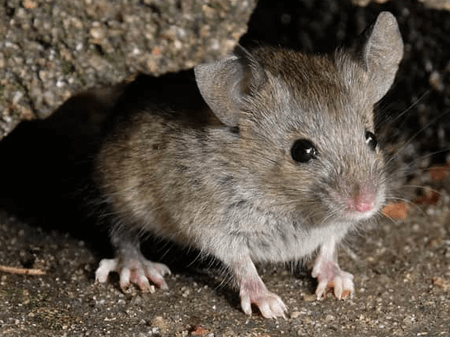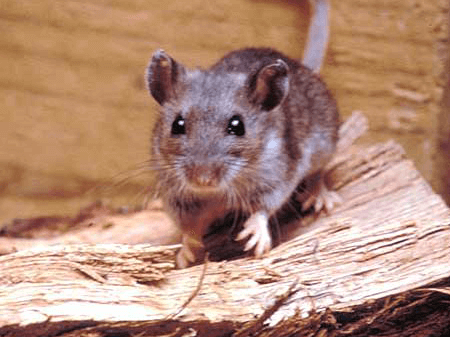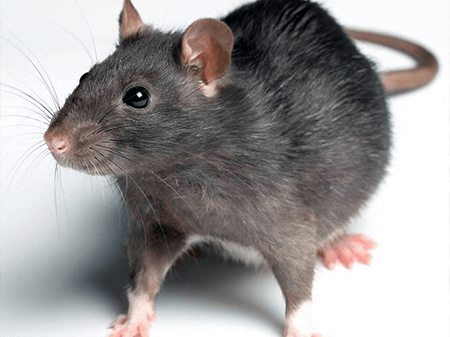Capture and Eradicate Mice & Rats
Rodent Abatement Programs for home, office, condo, or cabin
Trey Shelton is a proven expert in capturing & eradicating mice & rats. Successfully eradicating rodents requires the ability to be absolutely thorough when conducting inspections for rodent activities and access points. The marriage of Trey's skills and his perseverance, honed by over 25 years of hands-on experience, means you have a professional who is going to solve your rodent problems once and for all. Guaranteed.
Odors, rodent feces, travel way smudge marks, food residues, blood smears on insulation colored droppings from rodenticide consumption, contaminated insulation, and urine puddles are sure signs of rodent activity, either past or present. If you feed them, they will come. And if you give them a safe place to sleep and raise young, they will be with you for a long, long time.
Aside from the health risks rodents pose, the danger of house fires caused by rodents is significant. Some 25% of all house fires in the country are attributed to rodents chewing away wire insulation and causing fires. Their presence can also cause disabling asthmatic symptoms. It's very hard for homeowners to imagine the filth Trey finds in crawl spaces or attics harboring rodent infestations.
Trey's background as a general contractor enables him to anticipate structural vulnerabilities that may provide rodents with a highway into your home. Following an inch-by-inch inspection of your home's exterior perimeter and crawl space interior perimeter, access points are located and permanently sealed in an aesthetically pleasing manner. Rodents sealed inside the attic or crawl space are trapped and exterminated until completely removed. As well, Trey can handle all aspects of complete crawl space and attic cleanouts, completed to the highest standards in the industry.
Trey is a recognized expert in the highly specialized field of rodent abatement. Bringing credentials without equal to bear on every building demolition or earthworks project in order to prevent rodent dispersal, Trey’s years of experience in specialized pest control techniques, general contractor scheduling focus, and large animal control trapping principles combine to enable Trey to produce stellar results in this high value, critical role.
Mice
- House mice are gray colored and are mostly found in cities.
- Deer mice are deer hair colored with white bellies, big ears, and eyes, and are found in suburban and rural areas around urban centers. Generally, problem mice found north of Seattle and east of Lake Washington are deer mice.
- Deer mice can carry and spread hantavirus to humans by our inhalation of virus-laden particles.
- Washington has one of the highest hantavirus case levels in the country with 45 cases reported through 2012, with the disease claiming 36% of those infected. Some 20 – 30 cases are reported annually in the United States.
- The Washington State Department of Health found 14% of over 1,100 mice sampled between 1993 and 2001, tested positive for hantavirus.
- Wherever rats are found, the past or current presence of mice should be anticipated and both need to be removed with professional help. Mice tend to cohabit more successfully with roof rats than Norway rats.
- Deer mice are often prone to enter auto engine compartments and vehicle interiors during colder months in the Northwest. Mice and rats chewing on engine compartment wires and especially engine vacuum hoses can cost you dearly and drive your mechanic to exasperation.
- Deer mice are notoriously delicate feeders and will often lick a trap clean without tripping the trap. By using a uniquely designed trap baited in Trey's special way, he is reliably catching mice sometimes even before leaving the premises. That's the mark of a true professional trapper.
- Mice can be present without significant physical signs, and can enter through 1/4" to 3/8" openings.
- From a control standpoint, since mice are often difficult to detect and exclude from a structure, using a pest control expert of Trey’s caliber will ensure the best results. In most cases, mice and rat infestations are not permanently eliminated by the best do-it-yourself efforts.
- Many folks living in close proximity to natural, heavily vegetated environments believe because exclusion is so difficult, that they have no other choice than to live with rodents inside their home. While some structures are indeed more challenging to seal up, Trey knows how to get the job done. Permanently.
- Mice are notorious hoarders often collecting and storing many pounds of birdseed, dog food, and rodenticide pellets inside walls, and man-made compartments like kitchen sink bases, dresser drawers, and dryer stand. This behavior can lead to secondary scavenger insect infestations that sometimes invade living quarters by the hundreds and hundreds.
- Contrary to published data about mice behavior patterns, on many occasions Trey has observed mice traveling extended distances from nesting locations as they search for food. And the same is true for rats as well.
Rats
- Body fur ranges from black to light brown.
- The Puget Sound region has both roof rats and Norway rats, and each is specialized survival machines with prodigious birth rates. Females can mate within minutes of giving birth.
- No longer a telltale sign of a blighted neighborhood, rats can be found almost everywhere today.
- Most of the time, you don't see rats and mice living around you. As prey animals, they survive by being secretive and staying out of sight especially during daylight hours. Whenever rodents are seen during the day, this is a sure sign you have a very heavy population and that excessive competition for food is forcing some animals to forage when they are most vulnerable to predation. This is time to call for help.
- Both roof rats and deer mice are extremely capable climbers. Walking a single telephone wire from the pole to your roof or going straight up a wall is easy for these sure-footed, crafty critters. Trees have a silent way of growing into contact with your roof, so keeping them cut back six feet or so will deny rodents this easy access path.
- According to the Center for Disease Control, rats can serve as carriers and transmitters of at least 35 diseases.
- They are often found in crawl spaces and attics of our homes where they contaminate the area and can do very significant damage to insulation, electrical wires and plumbing systems.
- Bell Laboratories reports rat bite pressure at 7,000 PSI and single-pair offspring production into the many thousands per year.
- Rats often chew holes in flexible plastic warm air ductwork, thereby contaminating the air in the entire house.
- Odors in homes that come and go over a long period of time may be from rat chewed holes in drain pipes, allowing sewer gases to enter the home.
- Rats associate specific events with danger, and after just one lesson, never make the same life-threatening mistake again. One near-miss by a snap trap and that rat will never touch a trap again.
- In addition to obvious chewing evidence, rats can also leave much more subtle signs of their presence that often requires Trey’s recognized expertise to detect and analyze.
- Indoor dogs and cats can detect the presence of rodents long before people become aware of them. Pay attention if your pet sits and looks repeatedly at an area……..it’s just their way of suggesting you call Trey right away to evict those unwanted invaders.
- By Trey’s own experience, rats can easily survive over a month without food, but only days without water. Home confined rats can chew into your furnace condensate line, water line to the fridge, dishwasher and clothes washer, and modern pex water supply pipes, all in search of water. The cost to repair such water damage could easily be more than you ever imagined.
- Unless you love the stench of dead rats and mice…..never, never use rodenticides inside the house to eliminate an inside rodent population. For that matter, do not use baits outside either before the structure is sealed rodent-tight. There are two principal modes of action employed by rodenticides, and both formulations greatly favor death occurring where the rodent lives.
- There has never, ever been a modern-day rodenticide that caused thirst and desire to drink water outside, with subsequent death expected outside. Water does not trigger the lethal effect of a rodenticide. Now you know.
- Whether or not a foul odor has been detected, a sudden flush of flies inside the house almost always means a rodent has died inside the structure. Time to call Trey.
- Major rat dispersal following building demolition and earthworks projects has lead Cities to develop Municipal Codes mandating rodent abatementprograms prior to the start of work.
Want to learn more about how Trey can help solve your rat or rodent problem?
Contact Pest Control Northwest today - we can help you get rid of mice, and rats!





